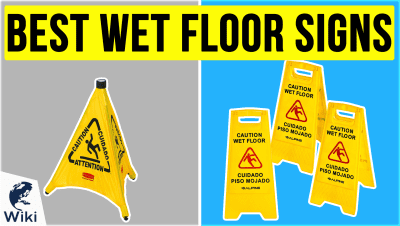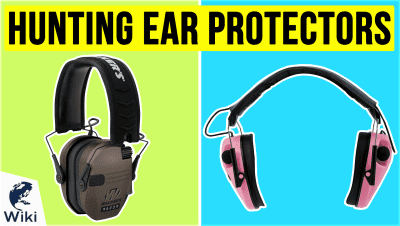5 Organizations Working To Protect Wildlife
Most of us are willing to pay a vet any price to take care of our pets, but give little thought to animals in the wild, many of whom come to harm because of human interaction. These organizations work to protect those animals, whether through rehabilitative care, anti-poaching investigations, or public education projects. This video was made with Ezvid Wikimaker.
5 Wildlife Organizations Making an Impact
| Name | Mission |
|---|---|
| Greenwood Wildlife Rehabilitation Center | Dedicated to the rehabilitation and release of sick, injured, and orphaned wildlife, treating mammals, birds, and waterfowl in Colorado |
| Wildlife Justice Commission | Undertakes undercover, intelligence-driven investigations with the goal of presenting verifiable, first-hand evidence of wildlife crimes to national governments and law enforcement agencies for action |
| Internet of Elephants | Strives to make wild animals a part of daily life for millions of people currently unconnected to conservation, addressing the mental blocks that prevent people from engaging with these issues |
| Cobequid Wildlife Rehabilitation Centre | Cares for injured, orphaned, or sick wildlife in Nova Scotia with the goal of releasing rehabilitated animals into suitable habitats as close as possible to where they were found |
| Aspen Valley Wildlife Sanctuary | To care for injured and orphaned wildlife and return them, once rehabilitated, to their natural environment, and to provide animals that require permanent care with an environment that satisfies their biological and behavioral needs |
Baby Blue Jays Feeding at Greenwood Wildlife Rehabilitation Center
Wildlife Conservation Facts
- There are more than 1,000 species worldwide defined as endangered
- 4% of the mammals in the world are wild animals. 36% are human beings and 60% are farm animals
- The global wildlife population decreased in size by approximately 52% between 1970 and 2010
- 30% to 50% of all species are possibly heading toward extinction by mid-century
- Freshwater ecosystems are home to more than 100,000 known species of plants and animals
- Freshwater habitats lost 83% of their vertebrate populations between 1970 and 2014
- There are approximately 26,000 wild polar bears, but this population is expected to decline 30% by 2050
- 1 kg of ivory can sell for as much as $1,000
- An average of 96 elephants are killed for their ivory in Africa each day
- More African elephants are being killed for ivory than are being born
Some Patients at the Aspen Valley Wildlife Sanctuary
9 Works of Non-Fiction That Are Perfect for Animal Lovers
Slow-Motion Eagle Release at Cobequid Wildlife Rehabilitation Centre
In Depth
The effect of the ever-growing human population is detrimental to the world's wildlife. Natural habitats are diminishing, animals are continuing to be trafficked, and the amount of injured wildlife increases annually. In no particular order, here are some organizations dedicated to protecting wild animals and educating the public on ways to help.
First up at #1 is Greenwood Wildlife Rehabilitation Center, a non-profit organization devoted to the rehabilitation and release of orphaned, injured, and sick wildlife. Greenwood is the largest organization of its kind treating mammals, birds, and waterfowl on the Front Range. Thousands of animals are treated annually and over 200 different species have come through their doors since being founded in 1982.
Greenwood provides outreach programs for audiences of all ages on topics like rehabilitation, solutions to human-wildlife conflicts, and how people can help Colorado's wildlife. The organization can also advise the public on situations with animals they do not have appropriate permits for, including bats, rattlesnakes, and mammals larger than coyotes.
The organization can also advise the public on situations with animals they do not have appropriate permits for, including bats, rattlesnakes, and mammals larger than coyotes.
Next at #2 is the Wildlife Justice Commission, whose mission is to disrupt and help dismantle transnational organized criminal networks trading in wild animals, timber and fish. This organization believes wildlife is not for sale to the highest bidder and must be protected from traffickers who turn endangered species into trinkets and jewelry.
Every 30 minutes, an elephant is killed for its ivory, and three rhinos a day are slaughtered for their horns. The WJC's investigators work undercover to drive wildlife criminals out of the shadows and bring an end to their multi-billion-dollar business. Evidence of crimes gained through intelligence-led investigations and high-level political engagement are combined to put an end to wildlife trafficking.
At #3 is Internet of Elephants, a team of wildlife lovers, data heads, and gaming geeks who use the combination of their skills to support conservation. Since the 1980's, the world has lost 50% of its wildlife. Without attracting the next generation of potential difference makers, the next 100 years of conservation could be even worse, which is why it's critical to connect with young people.
Without attracting the next generation of potential difference makers, the next 100 years of conservation could be even worse, which is why it's critical to connect with young people.
This organization wants to engage the public with conservation in a new way, one in which real wildlife supported by real conservation organizations becomes part of their daily life. The latest technology is used to build digital experiences that create closer relationships between people and wildlife, whether through Augmented Reality, location-based games, or data visualizations.
Coming in at #4 is Cobequid Wildlife Rehabilitation Centre. Since 2001, the CWRC has been dedicated to providing veterinary care and rehabilitation for injured, orphaned, and sick wildlife. On average, 150-200 animals are cared for every year, and each year, the number of animals requiring assistance keeps growing.
Located in Hilden, Nova Scotia, CWRC's goal is to release rehabilitated animals into suitable habitats, and makes every effort to return animals near to where they were found. Through education, the organization increases public awareness and concern for wildlife and the environment. CWRC relies solely on donations and fundraising, and everyone works as a volunteer.
Located in Hilden, Nova Scotia, CWRC's goal is to release rehabilitated animals into suitable habitats, and makes every effort to return animals near to where they were found.
Last on the list at #5 is Aspen Valley Wildlife Sanctuary, situated in Muskoka, Ontario, on 460 acres of natural habitat. Started in the early 1970s, the group's primary mandate is to rehabilitate animals who come to the facility so they can eventually be returned to their natural habitats. The organization also educates the community about co-existing with wildlife and humane solutions for animal-related issues.
Aspen Valley has the space and habitat to care for large animals such as moose, deer, bear, and wolves, as well as aquatic animals such as beavers and otters. In 2010, the organization achieved an 87% success rate in the rehabilitation of admitted wildlife, exceeding previously recorded numbers by more than 20%.

















